WILDLIFE WOES
Decline in Kruger rhino-poaching rates woefully drives shift to commercial bushmeat, reveals park ranger
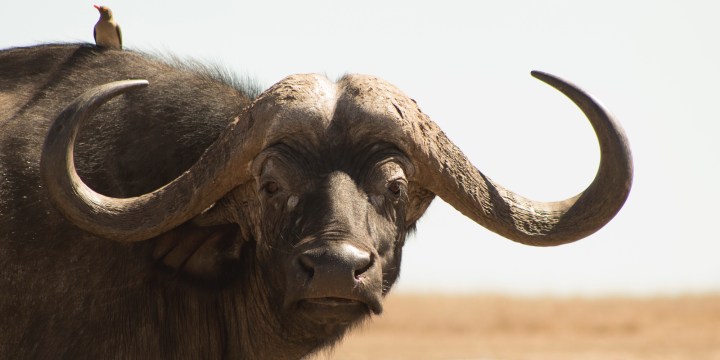
A void left by illegal horn income may now be driving neighbouring communities to snare and shoot species such as African buffalo in the park’s southwest sector. Despite the lowveld’s searing heat, thorny canopy and tough terrain, Kruger’s staff and honorary rangers say they are fighting back — on foot.
WARNING: This article contains graphic descriptions that may upset sensitive readers.
Fortified in fatigues and chaps, Pretoriuskop section ranger Rangani Tsanwani patrols the southwest reaches of the park most days. In all seasons, Tsanwani and his team do daily 10km sweeps of this wild country by foot — whether the mercury hovers in the high forties, or winter brings its own set of trials.
It is in the colder, drier months that the parks sees an uptick in snaring, which has surged by 200%, as Daily Maverick first reported in October.
To make snares, poachers typically fix a camouflaged wire or cord noose over animal paths which tightens upon disturbance. Since the Covid-19 pandemic, Tsanwani and his colleagues have removed 14,000 such snares throughout the park.
In 2022, at least 7,270 snares were removed — compared with 2020’s 2,407 snares.
“There is an increase in snares, but it’s seasonal,” Tsanwani told Daily Maverick in Pretoriuskop, after accompanying six honorary rangers on a snare sweep. During a single 8km patrol between 7am and 10am in late October, Tsanwani, his staff and the volunteer honorary rangers flushed out and destroyed 66 snares.
“During dry seasons, and when the area is burnt, that’s when you will see lots of snares,” Tsanwani said. In winter, when water was concentrated, snares tightened their stranglehold along Kruger’s western boundary, he said — particularly along rivers or streams within relatively easy reach of the Pretoriuskop fence.
The nearby Skukuza and Stolsnek sections, as well as Pafuri near the park’s borders with Zimbabwe and Mozambique, have also been reported as hotspots by recent Parliamentary figures.
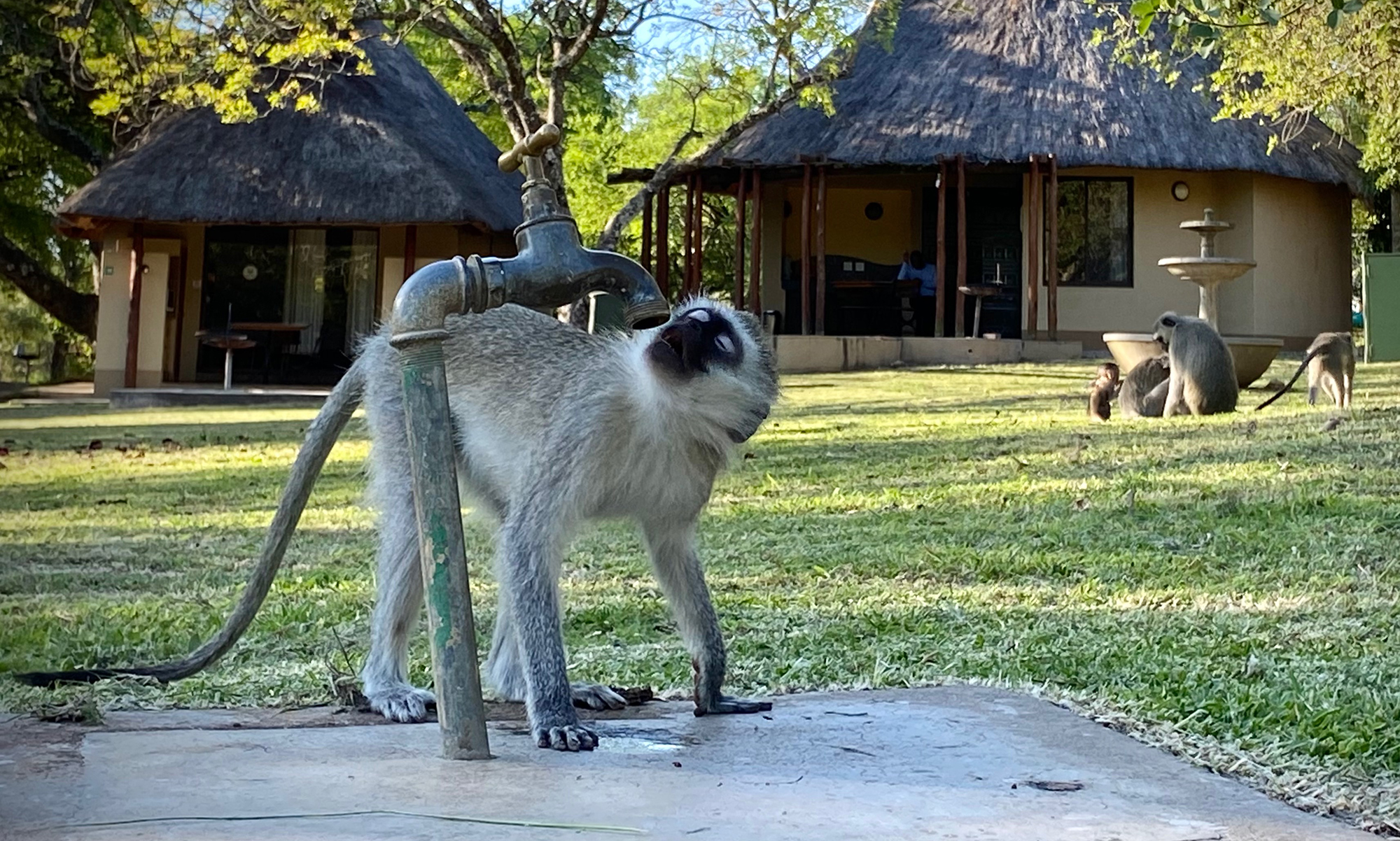
In late October, a vervet monkey tries to satisfy its thirst during a simmering afternoon at Pretoriuskop rest camp, Kruger National Park. (Photo: Tiara Walters)
‘Shooting the buffaloes, selling the meat’
In the first half of 2023, over 60% of rhinos poached in South Africa perished in KwaZulu-Natal — about 140 compared with Kruger’s roughly 40 casualties. This continues Kruger’s decreasing poaching trend, which has seen a population plunge from 10,000 animals less than two decades ago to, officially at least, under 3,000 today.
Now African buffaloes — slaughtered by both snare and firearm — appeared to be among the targets.
“Since rhino poaching has dropped, I think people are more into snaring,” Tsanwani said. “There is a link because they are not only using snaring to get buffaloes — they are also shooting the animals.”
A tangled web seemed to be driving the park’s snaring surge, Tsanwani added: “There is a medicinal trade. There are those who are poaching to sell the meat. And there are those who are poaching to feed their families.”
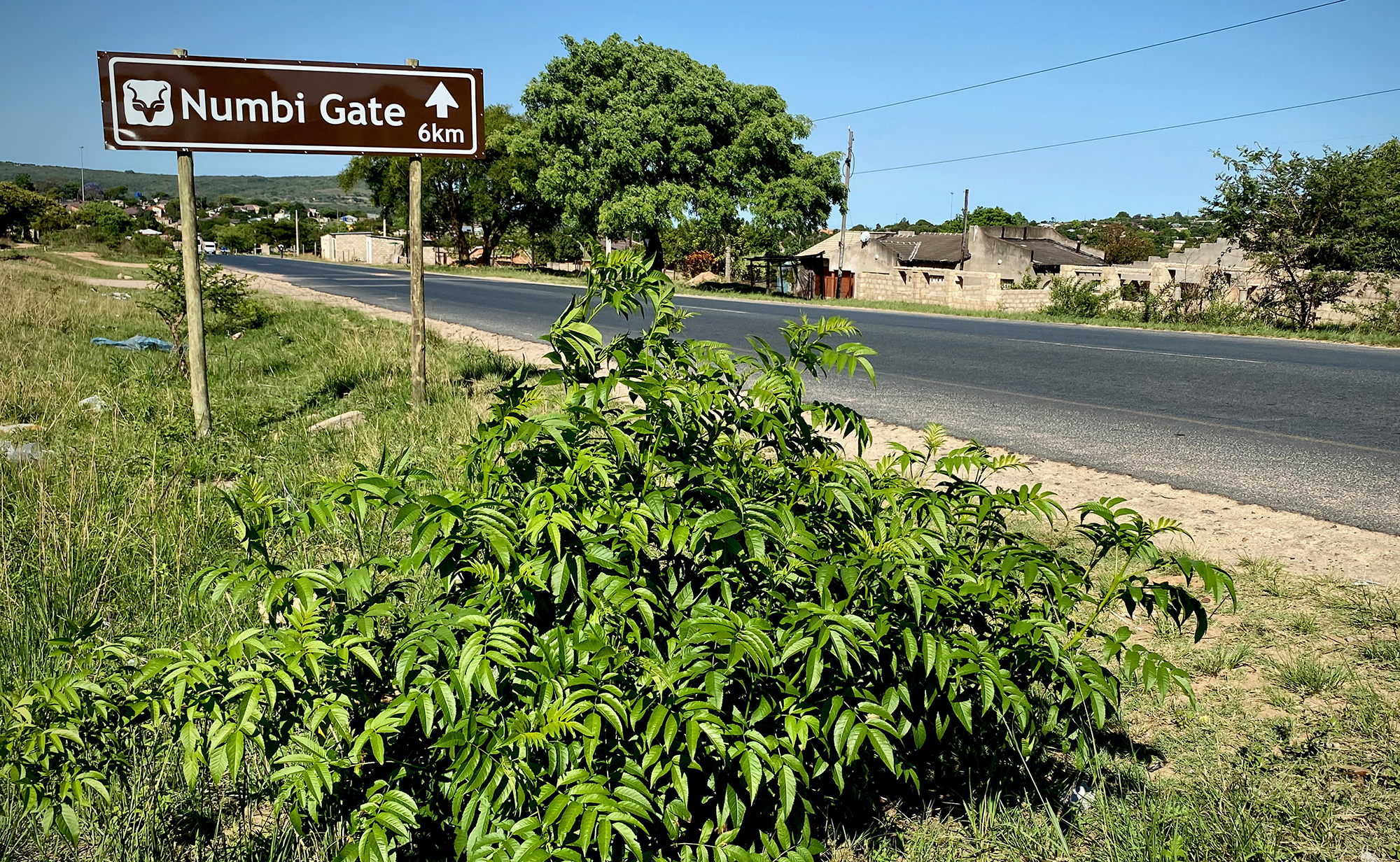
The 6km mark to Kruger National Park’s Numbi gate, which leads to the Pretoriuskop section, in late October. A sprawling network of informal settlements, in which the vast majority of people are unemployed, abuts the park. (Photo: Tiara Walters)
Over recent decades, impoverished settlements outside Pretoriuskop’s Numbi gate have encroached upon the park’s western edge, bringing with them economic hardship that is increasingly spilling through the penetrable fence.
“Remember most of the people here, they were relying on rhino poaching for survival,” said Tsanwani, explaining some poachers were resorting to more than snares to down their quarry. “Now they don’t have anything that is bringing food to the table — so they are moving to buffaloes, shooting the buffaloes and selling the meat.”
Practised and prepared
Snaring, in other words, was not merely driven by hunger, but had evolved into a commercial business for the bushmeat market, with customers already lined up to purchase meat on the other side of the fence.
“People who are arrested, when you ask them, they will tell you we already had buyers outside,” he said. “So they are killing the animal in order to sell the meat.”
The methods were organised and practiced, suggesting the potential presence of a bushmeat syndicate.
“What [rhino] poachers normally do, they hire the younger boys, and they are the ones who are sitting on the hill, and they tell them to sit there and view the animals,” he said. “They [the boys] will call them to say, ‘There are animals that are coming down.’ So the same boys, they are still using them for operations.”
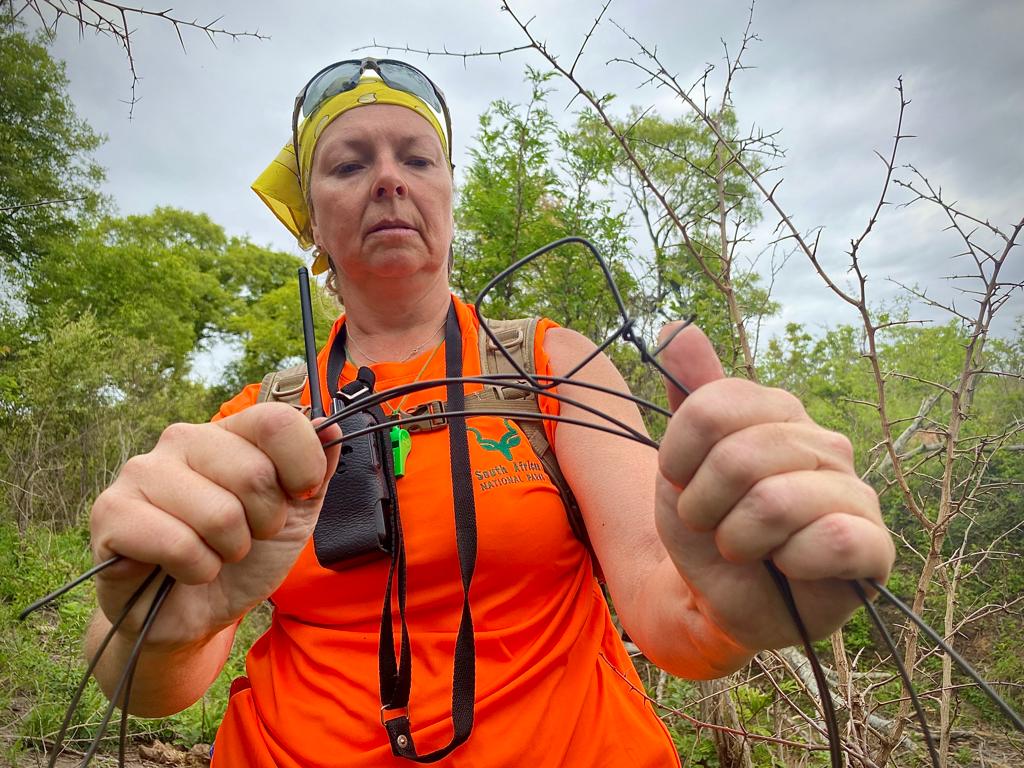
Honorary ranger Mandi Malan displays a snare with a square knot — a characteristic signature of a regular snarer in the Pretoriuskop region, she says. (Photo: Tiara Walters)
Snare tactics: ‘We know it’s for a buffalo’
On the cloudy but blistering October morning that Daily Maverick joined that sweep, volunteer snare patroller Mandi Malan hunted down multiple traps set for a species smorgasbord — including buffalo.
Watch: Honorary ranger Mandi Malan, a volunteer, hunts down and dismantles a buffalo snare in the Pretoriuskop region, Kruger National Park. (Video: Tiara Walters)
“This is a big snare — it’s meant for a buffalo,” demonstrated Malan, one among about 2,000 SANParks honorary rangers stationed in 31 regions around the country. “They use this bark, or sometimes grass, to tie and hold it here, because it’s a thick cable snare. And we know it’s for a buffalo because they used a big tree, and they do it on the riverbank because here the buffaloes eat a lot.”
Near one of several buffalo snares found by Malan, she pointed to yet another wire trap and, beneath it, dark, dry blood caked the leaf litter.
Although Pretoriuskop indicated that buffalo were among targets of illegal hunters, Dr Sam Ferreira, Kruger’s large mammal ecologist, said the park had no hard data to support a wider trend. That said, snaring was not only insidious and difficult to detect, but an unforgiving killer. Ungulates like buffalo, pachyderms like rhino, carnivores like lion, and so on, covered significant distances while trapped in wire, exposing them to profound pain and even death.
Some were easier to catch than others. One ranger not authorised to speak publicly told us of a persistent snare that had decapitated a hyena. That, of course, is an extreme case, since hyenas are remarkably resilient, often biting through snare cables or breaking them to escape. The wounds seen on hyenas, who are accidental non-targets like other carnivores, are mostly caused during their escape attempts.
For reasons less publicly reported, said Tsanwani, snaring was also indiscriminate because of veldfires started by illegal hunters.
“Because, often, when the area is burnt like this,” he explained, gesturing at the soil at our feet, “we’ll start to pick up lots of snares. The community burnt this area intentionally to attract animals. When new shoots come out, these grasses, they become more palatable. So, animals will be forced to come down here to feed. That’s the time where you will see lots of snares. Come summer time, there will be water everywhere, and there will be grass all over. Then the snaring will drop a little bit.”
Until the next winter season, that is.
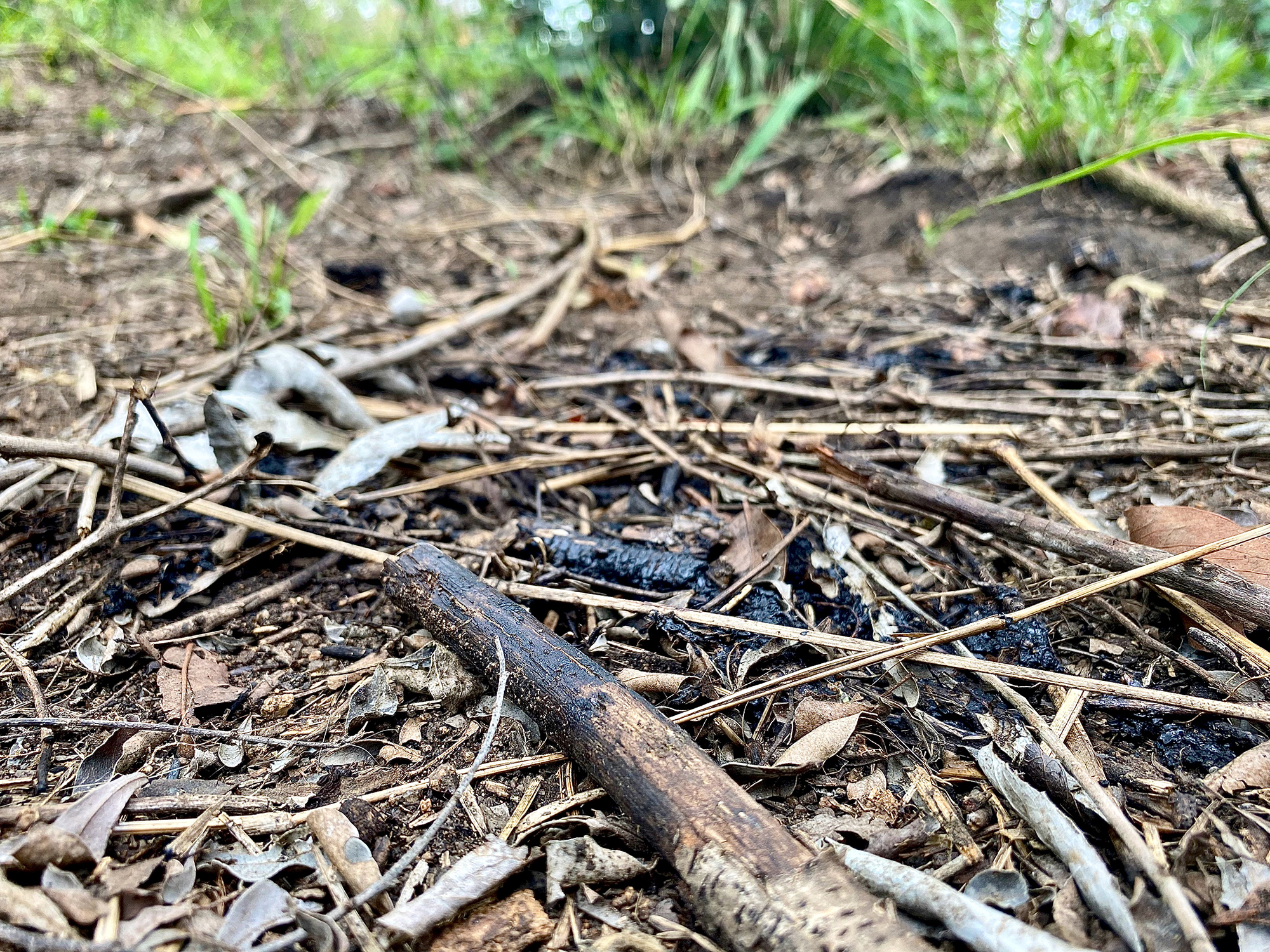
Dried blood in the leaf litter beneath a snare in Kruger’s Pretoriuskop section. (Photo: Tiara Walters)
“If you have got snares like this, it’s disturbing to your work routine because you don’t just walk, you are looking,” he noted. “If you are patrolling to remove snares, you spend more time looking for snares. But if it’s a patrol of the fence, then you just walk from one point to the other.”
Yet, Tsanwani said he was driven to brace the acacia frontline because he loved it.
“I love nature. I studied conservation. So, yeah, that’s my life, that’s my day-to-day thing,” he said, his fatigue sleeves rolled up to his biceps. “I started this career as a wilderness guide for guests, then I moved to ranger services. That’s my life, that’s who I am.”
Nevertheless, Kruger’s mammals are increasing
Despite snares littering fence areas along Kruger’s western boundaries, park staff told Daily Maverick the surge was isolated to areas within relatively easy walking reach of the perimeter. The greater park’s 2-million-hectare interior was mostly unaffected except for animals snared near the western edge and venturing deeper within. Local private game reserves with beefed-up fences have not reported a surge.
According to Ferreira, the large mammal ecologist, most of the park’s charismatic megafauna were, despite localised snaring along the fence, doing well. About 30,000 elephants roamed the length and breadth of the reserve while spotted hyenas doubled to about 7,000 over the past 15 years, indicating good prey biomass.
Over the same period, giraffes had edged up by 5% a year, while lions were stable at 2,000 — despite poisonings. Hippos had also shown their own brand of resilience, reaching highs of 7,000 before a drought in 2015-2016. Black rhinos “managed to maintain their low populations” at 210, but white rhinos faced higher mortality rates.
“And with the reduction in poaching rates we hope that we’re also going to see our white rhinos increase,” he said, suggesting the optimistic possibility of a “bumper calf year”.
Ike Phaahla, the park’s spokesperson, said the park had implemented intensive, multilayered efforts targeting rhino poachers specifically, including a K9 unit with over 30 dogs, surveillance and sentences up to 40 years. Rhinos across the park had been dehorned.
“Kruger is surrounded by poverty-stricken communities where there is no service delivery, unemployment is very high and there is little or no law enforcement,” said Phaahla, who cited “key” partnerships with law-enforcement agencies and communities in the hope of addressing the snaring surge.
Indeed, Kruger’s heightened security approach may have made Hluhluwe-iMfolozi Park, where a decision has not yet been made on dehorning, a softer target.
‘Cuts like a knife’
According to state veterinarian Dr Louis van Schalkwyk, who was regularly called out to lure out, sedate and treat injured animals, there was no injury in an animal “more horrible” than a snare.
“A cable cuts like a knife,” he said.
Speaking at southern Kruger’s Skukuza’s rest camp, Van Schalkwyk pointed out that the park’s 6,000km of roads represented only 4% of its Israel-sized expanse. Some animals, like leopards, were “extremely” difficult to catch because they did not respond well to lure calls.
“You often have to catch them in a cage trap,” noted Van Schalkwyk, who said he aimed for follow-up treatments of species where possible. “You have to be really patient.”
Most of all, said the veterinarian, before rushing off to treat a snared wild dog, he was haunted by those he could not save — despite Kruger staff and honorary rangers removing thousands of snares in the past three years.
“You always have to wonder,” he remarked, “how many did not make it to that point when we could at least have found them and saved them?” DM
Report snaring incidents in Kruger National Park, including the exact time, location and description of the sighting, to the Majoc Emergency Call Centre at 076 801 9679.
Tiara Walters is a full-time reporter for Daily Maverick’s Our Burning Planet unit. Walters’s stay in Kruger National Park was made possible, in part, by South African National Parks.

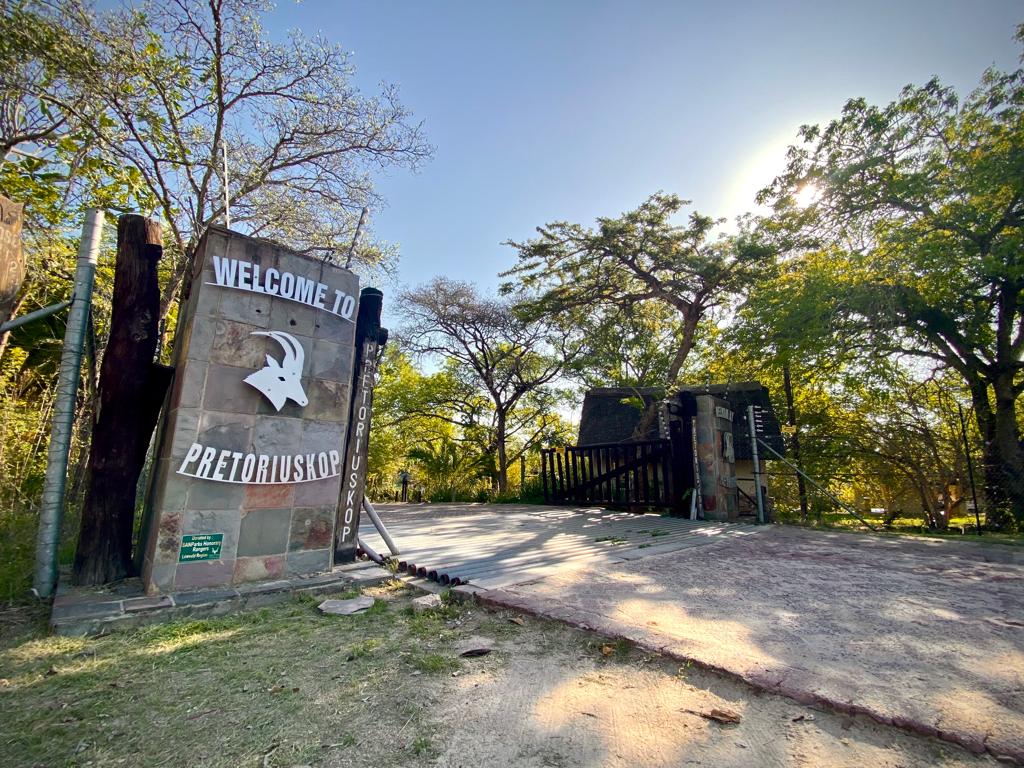



















 Become an Insider
Become an Insider
Comments - Please login in order to comment.